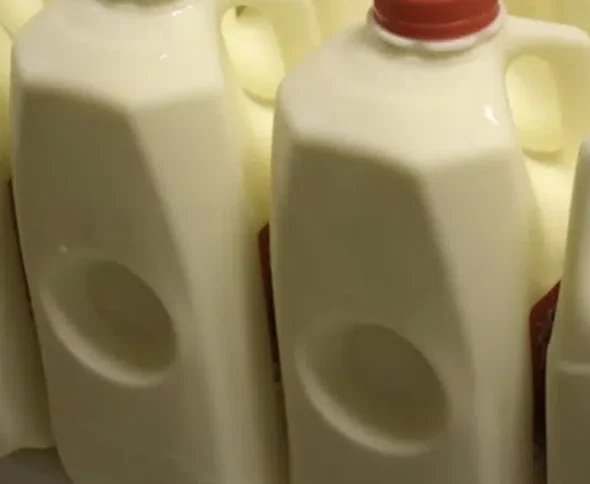Introduction
If you’ve ever bought a gallon of milk in a plastic jug, you’ve likely noticed the mysterious circular dent on one side. It’s not just a quirky design choice—it serves important purposes for safety, freshness, and convenience. This small but significant feature is a result of decades of design evolution in the dairy industry, ensuring milk stays fresh while preventing packaging mishaps.
Origin and Cultural Significance
The circular dent, or “expansion dimple,” originated in the mid-to-late 20th century, when plastic replaced glass bottles for milk packaging. Dairy manufacturers found that plastic jugs, while lighter and cheaper, were more susceptible to expansion and contraction due to temperature changes. The dent acted as a pressure relief zone, preventing the jug from bursting during transport or storage.
Culturally, the design reflects our society’s constant push for practical, affordable, and safe food packaging. For many, milk jugs with the dent are simply part of daily life—an unnoticed yet crucial innovation in modern kitchens.
Ingredients Quantity
While this is not a recipe, the “ingredients” for understanding the dent include:
- Plastic resin (typically high-density polyethylene, HDPE)
- Air pressure dynamics
- Thermal expansion principles
- Liquid volume displacement science
Optional Additions
For improved functionality, manufacturers may:
- Add textured grips for easier handling.
- Use opaque or tinted plastic to protect milk from light damage.
- Integrate measurement markings for convenience.
Tips for Success
If you’re handling milk jugs with this dent:
- Don’t pop the dent — It’s not meant to be pushed in or out for fun; it helps with pressure regulation.
- Store milk properly — Keeping it in a consistent, cool temperature reduces expansion stress.
- Check for damage — A dent that’s popped outward could indicate the milk has been exposed to excessive heat.
Instructions – How It Works
- Filling – Milk is poured into the jug at a controlled temperature.
- Sealing – The jug is capped, trapping a small amount of air inside.
- Pressure Control – If the milk expands due to heat, the dent flexes outward to absorb pressure.
- Freshness Maintenance – This prevents the jug from splitting or the seal from breaking, keeping milk fresh longer.
Description
The circular dent on a milk jug is a functional engineering feature designed to handle pressure changes during storage and transportation. It acts as a buffer for expansion, ensuring the jug remains intact and the milk inside stays fresh. Though it’s often overlooked, it’s a prime example of form meeting function in everyday product design.
Nutritional Information (For Milk Itself) – Per 1 Cup (240ml) Whole Milk:
- Calories: 149
- Protein: 7.7g
- Fat: 8g
- Carbohydrates: 12g
- Calcium: ~28% DV
- Vitamin D: ~24% DV
Conclusion
The small dent on your milk jug is more than a random shape—it’s a vital safety and freshness feature born from decades of packaging innovation. Without it, your milk might not survive the journey from the dairy farm to your fridge.
Recommendation
Continue to store milk properly, respect the jug’s design, and appreciate that even the smallest packaging details can make a big difference in keeping your food safe.
Embracing Healthful Indulgence
While the dent itself won’t change your nutrition, it ensures that your milk—whether enjoyed as a creamy latte, poured over cereal, or simply in a cold glass—remains fresh and safe. So the next time you grab a jug from the fridge, give a nod to the little circle that’s quietly protecting your morning pour.
